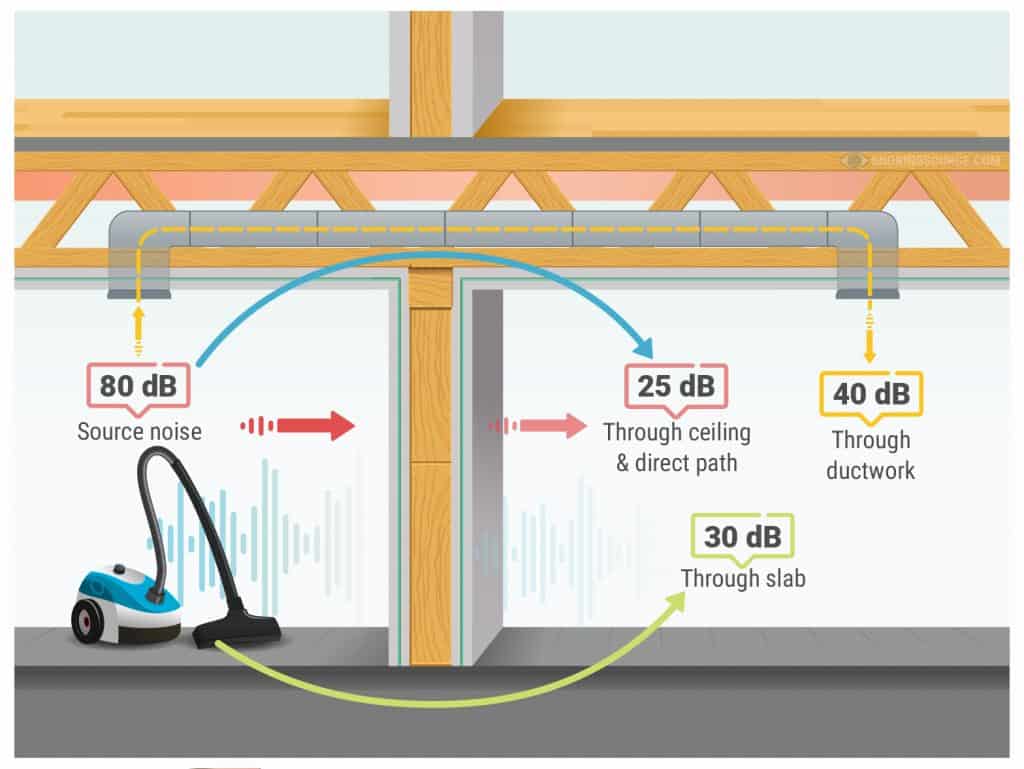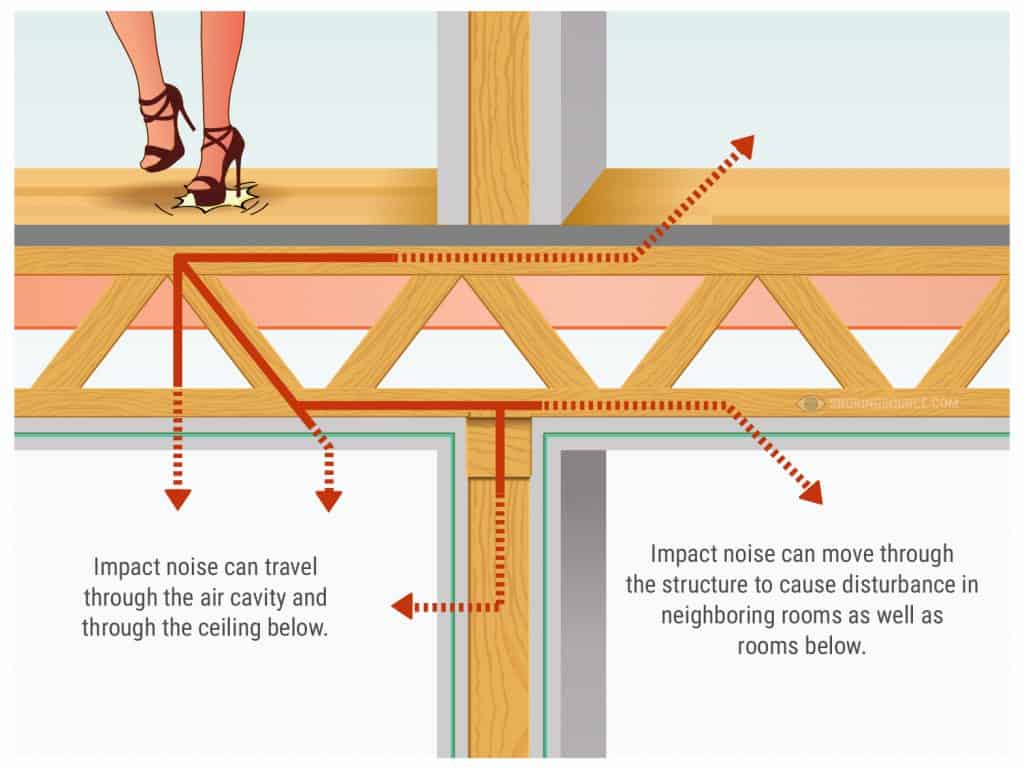Children playing, music, laughter, waves crashing, birds chirping, the pitter patter of little feet, raindrops falling; there are so many beautiful sounds.
However, there are times when even the most beautiful sounds can be distracting. For example, when you’re trying to get some work done in your home office and the sounds of your kiddos playing in their upstairs bedrooms are pouring through the ceiling, or when the music your downstairs neighbors are playing travels through the floor of your bedroom while you’re trying to sleep.
When you want to block out unwanted sounds, you need to figure out where it’s coming from in order to apply the right soundproofing methods. Pinpointing the source involves determining whether sound travels up or down.

Sound is a form of energy, and that energy is created when objects move forward and backward in a fast motion, causing a vibration.
For instance, if you were to knock on a door, the hard surface of the door would vibrate at a very high speed; so high, in fact, that you probably can’t even see it.
The vibration on the surface of the door then creates a vibration in the air that surrounds it. When the air moves, the energy that’s created when you knock on the door is carried out in all directions.
Eventually, the energy in the air travels into your ear, creating a vibration against your ear drum, and hence, you can hear the sound of a knock on the door.
To summarize, the creation of sound is comprised of two separate processes:
While both fascinating, for the purposes of soundproofing, we’re going to focus on the physical process of sound.
In order for soundwaves to be transmitted, they need to have a medium to travel on; in other words, the energy created by an object that makes a noise needs to be picked up by something.
The mediums that soundwaves travel on include air, solids, and water. As long as there are particles for soundwaves to bounce off of, they can travel through these mediums; but, if there aren’t any particles for the waves to bounce off of, they can’t move, and thus sound can’t move.
It is for this reason that sound cannot be heard within the vacuum of space; there’s nothing for soundwaves to vibrate off of.

In short, sound is omnidirectional, meaning that it can travel in all directions, including up and down. However, with that said, there are factors that can influence sound’s direction.
For example, the way in which sound wave travel can change in different types of settings. Another factor that can influence the travel of sound is the medium that sound travels on; for instance, the type of materials that are used to create a floor and a ceiling can influence the way sound travels and the types of sounds you hear.
The position of the source of the sound will impact where the soundwaves that the source creates are heard. To illustrate, the closer you are to the source of the sound, the higher the sound is going to be.
So, as you can see, while sound travels in all directions, the amount of noise you hear depends on several different factors. As such, in order to effectively soundproof a space, these factors need to be taken into consideration.
Another important factor that needs to be taken into consideration when you’re soundproofing is the type of noise you’re attempting to eliminate. Believe it or not, not all sound is the same; there are actually two different types of sound.

The first type is known as airborne sound; this is the type of sound that you’re probably the most familiar with.
Examples include people speaking, dogs barking, laughter, and music. As mentioned, in order for soundwave to travel, they need to have a medium that they can travel on, and in the case of airborne sound, that medium is air. The energy is picked up by and travels through the air until it collides with a solid object and passes into the space beyond it.

The second type of sound is referred to as structure-born or impact sound.
With this type of noise, a structure serves as the medium that soundwaves travel on; in other words, the sound is traveling directly through a solid structure, such as a floor, a wall, a door, or a ceiling. Structure-borne sound occurs when two objects collide.
The impact of that collision creates a vibration, and that vibration passes through the structure into the adjoining space. Examples of structure-borne noise include a washing machine thumping a floor, a ball being thrown into a ceiling, or someone knocking on a door.
Determining the type of noise you’re dealing with involves a simple test: When you hear a sound, place your hand against the surface that you hear it traveling through. If you can feel a vibration in your hand, then it’s impact or structure-borne noise, if you don’t feel a vibration yet you hear a sound, then it’s airborne noise.
The science of sound really is quite fascinating, and in order to effectively soundproof a space, you do need to have at least a basic understanding of this science.
Once you are familiar with how sound is made, travels, and the different types, you can then apply the proper techniques to eliminate or at least minimize the passage of soundwaves, thereby effectively soundproofing a space.

Snoringsource.com is a participant in the Amazon Services LLC Associates Program, an affiliate advertising program designed to provide a means for website owners to earn advertising fees by advertising and linking to amazon(.com, .co.uk, .ca etc) and any other website that may be affiliated with Amazon Service LLC Associates Program.